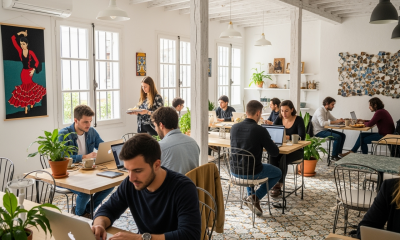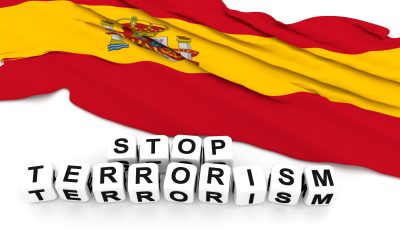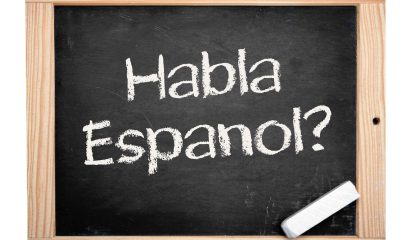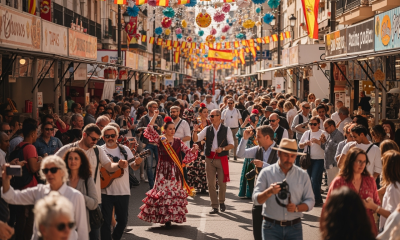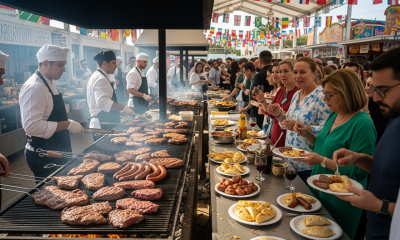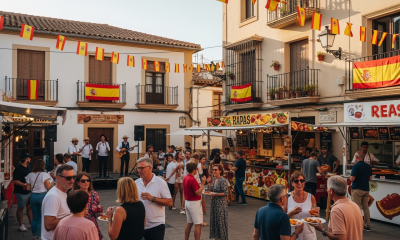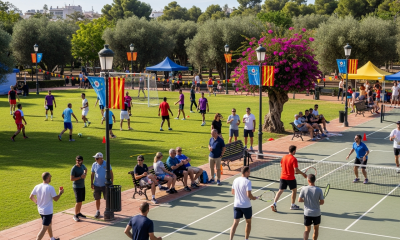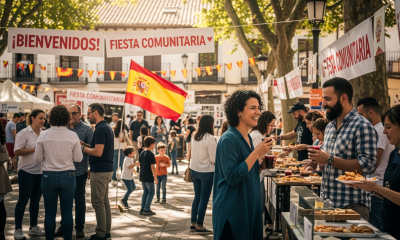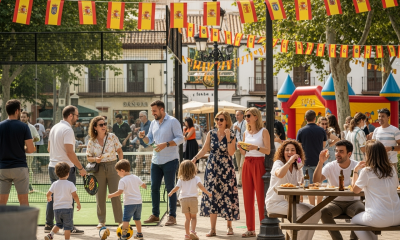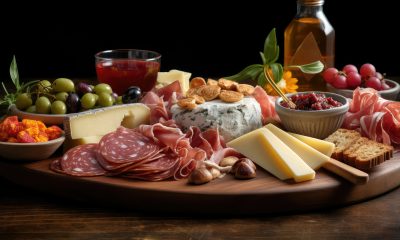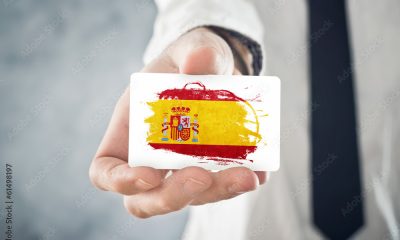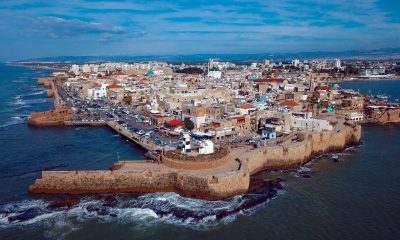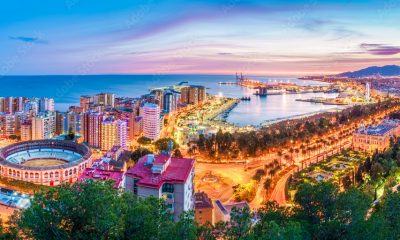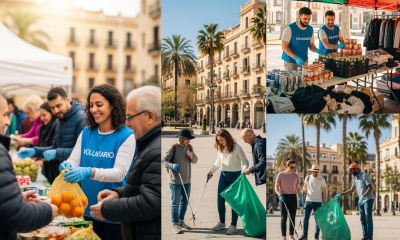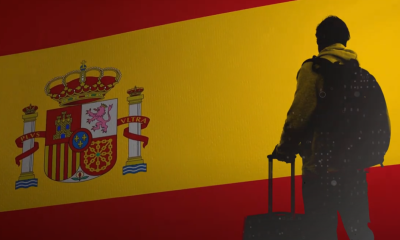Tourist Info
Calahonda: A Gem on the Costa del Sol
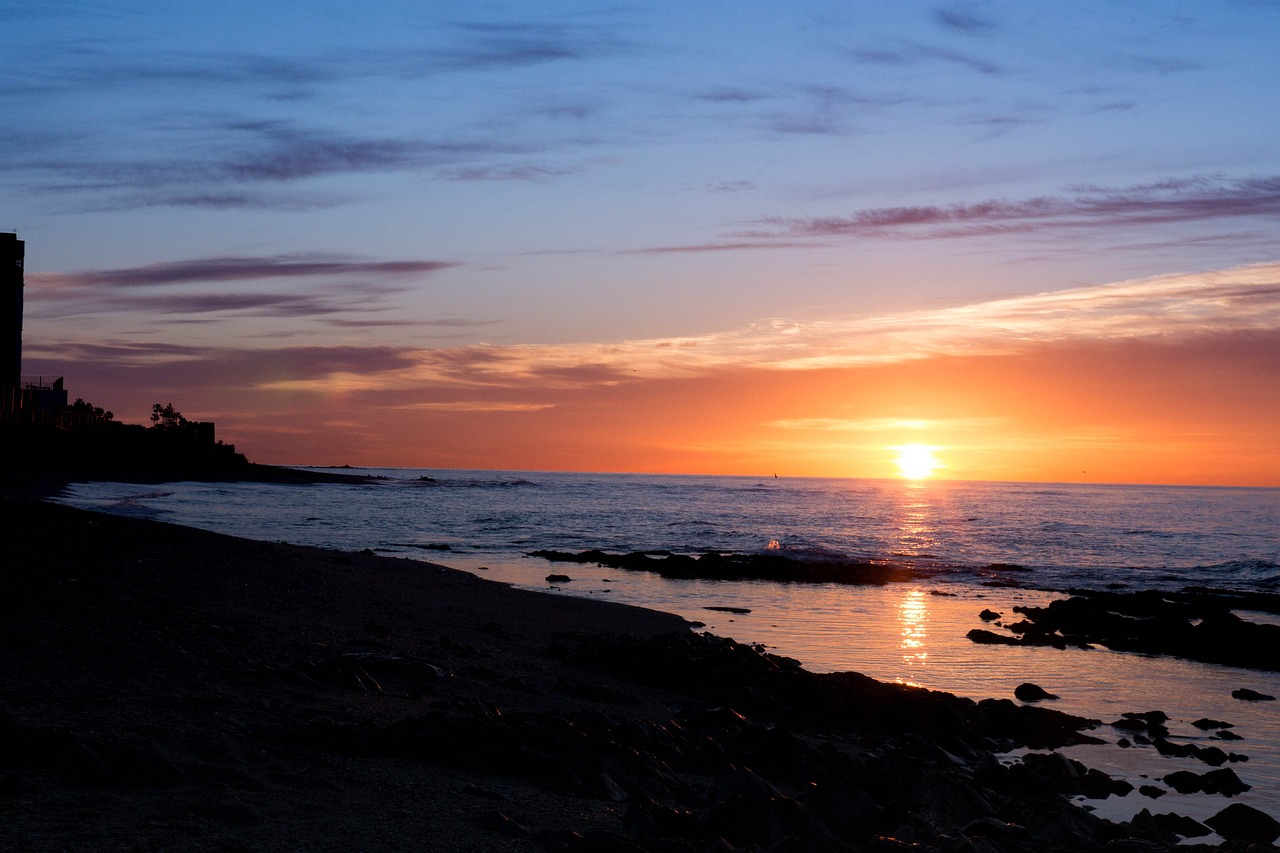
Calahonda
Nestled along the picturesque coastline of the Costa del Sol in southern Spain, Calahondais a charming town that captivates visitors with its stunning beaches,
vibrant culture,and rich history.
Whether you’re seeking a tranquil beach getaway, exploring the area’snatural beauty, or indulging in its vibrant nightlife, Calahonda has something for everyone.
In this article, we will take you on a journey through the heart of Calahonda, exploring its history, attractions, cuisine, and more.
History and Origins
Calahonda’s history dates back to the Moorish era when it was known as “Qalat Honda.”
The town’s name means “Deep Castle” in Arabic, a reference to the rugged landscape and strategic location along the coast.
Over the centuries, it has been influenced by various civilizations, including the Romans and Visigoths.
Today, remnants of this rich history can still be seen in the architecture, streets, and culture of the town.
Natural Beauty
One of Calahonda’s standout features is its stunning coastline.
The town boasts several beautiful beaches, each with its own unique charm.
Playa de Calahonda and Playa de la Luna are popular choices for sunbathing and swimming.
The azure waters of the Mediterranean Sea provide a refreshing escape from the Andalusian sun.
Water sports enthusiasts can also enjoy activities such as paddleboarding, snorkeling, and jet skiing.
For those who appreciate natural beauty beyond the beaches, Calahonda offers scenic hiking trails.
The nearby Sierra de Mijas offers an excellent opportunity to explore the rugged terrain and witness breathtaking views of the Mediterranean coastline.
Cultural Attractions
Calahonda is not only about natural beauty but also about culture and history.
The town is home to several notable landmarks, including the Iglesia de Santa Teresa de Jesús, a beautiful church with intricate architecture.
Stroll through the town’s streets, and you’ll find charming plazas, colorful Andalusian houses, and a welcoming atmosphere that invites you to explore.
Cuisine and Dining
No visit to Calahonda is complete without savoring its delectable cuisine.
The town boasts a diverse range of restaurants, bars, and cafes where you can indulge in traditional Spanish dishes and international flavors.
Seafood lovers will be delighted by the fresh catch of the day, while those with a sweet tooth can enjoy churros dipped in rich chocolate or traditional Spanish pastries.
Nightlife
As the sun sets, Calahonda comes alive with a vibrant nightlife scene.
The town offers numerous bars and clubs where you can dance the night away or enjoy live music performances.
The atmosphere is lively, and locals and tourists alike gather to celebrate the evening.
Shopping
Calahonda has a variety of shops and markets where you can find souvenirs, fashion, and local products.
The El Zoco Shopping Center is a popular destination for shopping, offering a wide range of goods from clothing and jewelry to handicrafts.
Accommodation and Hospitality
Whether you prefer luxury resorts, cozy boutique hotels, or vacation rentals, Calahonda has a range of accommodation options to suit all budgets and preferences.
The hospitality of the locals is renowned, making visitors feel right at home during their stay.
Conclusion
Calahonda, with its rich history, natural beauty, cultural attractions, and vibrant nightlife, is a hidden gem on the Costa del Sol.
Whether you’re seeking relaxation on the beach, adventure in the mountains, or immersion in the local culture, Calahonda has it all.
Plan your visit to this charming town, and you’ll discover why it’s a beloved destination for travelers from around the world.
Cultural
Best Spanish festivals and how expats can participate (2025 edition)

Published: August 2025
Spain is world-famous for its vibrant festivals – from wild street parties to solemn processions and everything in between. For expats, joining in these celebrations is one of the best ways to experience Spanish culture, meet locals, and make lifelong memories. Here’s your guide to the most popular Spanish festivals in 2025, plus tips on how foreigners can join the fun.
Why festivals matter in Spain
Festivals (fiestas) are at the heart of Spanish life. Each town, city, and region has its own unique celebrations, often rooted in history, religion, or local traditions. These events bring communities together, break down barriers, and create unforgettable experiences for everyone – locals and newcomers alike.
Top Spanish festivals in 2025
- La Feria de Abril (Seville): A week of flamenco, horses, and casetas. Join in by renting a traditional costume and dancing until dawn.
- San Fermín (Pamplona): Famous for the running of the bulls. Expats can watch safely from balconies or join the parades and concerts.
- La Tomatina (Buñol): The world’s biggest tomato fight! Tickets are required – book early for 2025.
- Las Fallas (Valencia): Giant sculptures, fireworks, and street parties. Volunteer to help build a falla or join a local group.
- Semana Santa (nationwide): Dramatic Easter processions in cities like Málaga, Seville, and Granada. Respectful participation is welcome.
- Feria de los Países (Fuengirola): Celebrate global cultures with food, music, and dance – perfect for expats!
- Fiesta de San Juan (coastal towns): Bonfires and beach parties on the shortest night of the year. Bring friends and jump the flames for luck.
How expats can join in
- Check your local town hall or tourist office for festival dates and activities.
- Look for expat groups or language exchanges organizing group visits.
- Volunteer for setup or events – many festivals welcome extra hands.
- Respect local customs and dress codes, especially for religious events.
- Bring cash, comfortable shoes, and a sense of adventure!
Useful links
FAQ
Disclaimer: This article is for informational purposes only. Always check official sources for dates and details before attending.
Cultural
International Feria Fuengirola 2024: a celebration of cultures and community

International Feria Fuengirola 2024: a celebration of cultures and community
Published: August 2025
Every spring, Fuengirola on the Costa del Sol transforms into one of Spain’s most vibrant showcases of international culture. The International Feria Fuengirola—also known as Feria de los Países—brings together more than 30 countries for five unforgettable days of music, food, dance, and friendship. In 2024, the fairground once again welcomed tens of thousands of visitors, expats and locals alike, for a true celebration of diversity, unity, and joy.
A festival for everyone
The Feria is much more than just an event—it’s a living symbol of how people from all over the world can come together in Spain and create something unique. With more than 30 national pavilions, you can stroll from Spanish flamenco to Argentinian tango, from Finnish sauna culture to Peruvian ceviche, all in a single afternoon. The atmosphere is pure happiness: families, friends, and strangers laughing, dancing, and sharing experiences with almost no trouble or conflict—just five fantastic days of community spirit.
Highlights from around the world
Each country’s stand is a mini-embassy of culture. Spain’s own pavilion is always a crowd-pleaser, with regional food, live flamenco, and artisan crafts. The Argentinian stand draws crowds for its sizzling steaks and passionate tango shows, while Chile’s booth offers pisco sours and lively cueca dancing. Germany’s beer garden is a social hub, with bratwurst and folk music, while the UK and Ireland stands serve up fish & chips, Guinness, and live rock bands. Peru’s pavilion is a must for foodies, with ceviche and pisco cocktails, and Finland surprises many with smoked salmon, reindeer snacks, and even a pop-up sauna.
Beyond food and drink, each stand hosts cultural performances—traditional dances, live concerts, costume parades, and workshops for kids and adults. It’s not just about watching; visitors are encouraged to join in, try a dance, sample a dish, or learn a few words in a new language.
Family-friendly fun
The Feria is designed for all ages. There are children’s workshops, face painting, international games, and plenty of open space to run and play. Many families make a day of it, sampling treats from different countries and enjoying the colorful parades that wind through the fairground each afternoon.
Peaceful, positive atmosphere
What makes the International Feria Fuengirola truly special is its peaceful, inclusive vibe. Despite the crowds and the many different languages and cultures represented, there’s virtually no trouble—just people enjoying life together. It’s a powerful example of how multicultural Spain really is, and how expats and locals can celebrate side by side.
Practical tips for visiting
- Dates: The 2024 edition ran from 1–5 May. The fair is held annually, usually around the same dates.
- Location: Fuengirola Fairground (official site), easily reached by train, bus, or car.
- Admission: Entry is free. Food, drinks, and some activities are paid per item.
- Opening hours: Stands typically open from midday to late evening.
- Family tips: Arrive early for easier parking and less crowded stands. Bring cash for food and souvenirs.
- Accessibility: The fairground is flat and accessible to wheelchairs and strollers.
- What to bring: Comfortable shoes, sunscreen, and an open mind!
Useful links
- Official Feria website
- Sur in English – Feria news
- YouTube: Feria de los Pueblos 2024 walking tour
- MamaMalaga – Feria review
Gallery: authentic moments from International Feria Fuengirola

FAQ: International Feria Fuengirola
When is the Feria held? Usually in early May. The 2024 edition ran from May 1–5. Check the official website for next year’s dates. Is the Feria suitable for children? Yes, there are activities, workshops, and plenty of space for families. How much does it cost to enter? Entry to the fairground is free. Food, drinks, and some activities are paid per item. Can I buy tickets in advance? No ticket needed for entry, but some shows or tastings may require advance booking. Are pets allowed? Pets are generally not allowed due to crowds and noise, but check official info for exceptions. How do I get there? The fairground is in central Fuengirola, close to the train station and with good parking options. Can I volunteer or participate as a performer? Contact the organizers via the official site for info on participation. Is the event accessible for people with disabilities? Yes, the fairground is flat and accessible for wheelchairs and strollers. Which countries are represented? Over 30 countries, including Spain, Argentina, Chile, Germany, UK, Ireland, Peru, Finland, and many more. Where can I find more photos and videos? Visit the official Feria gallery or search “Feria de los Países Fuengirola” on YouTube and Instagram.
Disclaimer: This article is for informational purposes only. All photos and screenshots are credited to their original creators. Please contact us if you would like your images featured or credited.
Cultural
Tap into community events and festivals: how expats can connect in Spain

Published: August 2025
Spain is world-famous for its lively community events and colorful festivals, which are at the heart of local culture. For expats, participating in these events is one of the best ways to meet people, learn about Spanish traditions, and feel truly at home. Whether you live in a big city or a small village, there’s always a fiesta, market, or neighborhood gathering to join. Here’s your guide to making the most of Spanish community life as a foreigner.
Why community events matter for expats
Community events are where Spanish hospitality shines. They bring together locals and newcomers, young and old, for shared experiences—food, music, dance, and celebration. For expats, joining these gatherings is a fast track to making friends, practicing Spanish, and discovering what makes each region unique.
Types of events you can join
- Local fiestas: Every town and city has its own annual festival, often featuring parades, concerts, fireworks, and traditional costumes. Check your town hall’s website for dates and details.
- Food and wine fairs: Spain’s regions celebrate their culinary heritage with markets, tastings, and cooking contests. Don’t miss the chance to try local specialties!
- Sports tournaments: From fun runs to football matches and cycling races, sports events are open to everyone—join as a participant or a fan.
- Music and dance festivals: Flamenco, jazz, classical, and pop—there’s something for every taste. Look for open-air concerts and dance workshops.
- Charity events and volunteering: Get involved in community projects, fundraisers, or environmental clean-ups. It’s a great way to give back and meet like-minded people.
How to find out about events
- Check your local town hall
- Follow local Facebook groups and WhatsApp chats
- Look for posters in shops, cafés, and community centers
Tips for joining in
- Don’t be shy—locals are usually happy to welcome newcomers, especially if you show interest in their traditions.
- Bring friends or go alone—either way, you’ll meet people.
- Try local food, join a dance, or volunteer for an activity to break the ice.
- Learn some basic Spanish phrases to help you join conversations.
- Always check if events are free or require tickets in advance.
Useful links
How can I find out about local festivals in my town? Check your town hall’s website, local Facebook groups, and posters in shops and cafés. Are community events open to foreigners? Yes, Spanish events are very inclusive—everyone is welcome! What should I bring to a local festival? Comfortable shoes, some cash, and an open mind—many events involve walking, dancing, and trying new foods. Do I need to speak Spanish to participate? Not necessarily, but learning a few phrases helps. Many locals are happy to help you practice. Are there family-friendly community events? Absolutely—most festivals and fairs have activities for children and families. How can I volunteer at community events? Contact the organizers via town hall, community centers, or event websites. Is it safe to attend large events? Yes, but as with any large gathering, keep an eye on your belongings and follow local advice. Can I join in traditional dances or processions? Yes! Locals love when newcomers join in—just follow the crowd and have fun. What’s the best way to meet people at events? Be open, start conversations, and don’t hesitate to join group activities. Where can I find more information about Spanish festivals? Spain.info and your local town hall are the best sources for up-to-date event info.
Disclaimer: This article is for informational purposes only. Always check official sources for event dates and details.
-
Integration & Community3 months ago
Spain’s new Digital Nomad Visa: 2025 updates and requirements
-
Housing & Utilities2 months ago
IPTV – Streaming Box tips to reach your channels and movies
-
Legal Requirements & Documentation3 months ago
Driving in Spain in 2025: Updated rules for EU and non-EU license holders
-
Banking & Finances3 months ago
Tax changes for foreign property owners in Spain (2025)
-
Integration & Community3 months ago
Why Malaga is Spain’s Top destination for Digital Nomads in 2025
-
Housing & Utilities3 months ago
Best Internet & mobile providers in Spain for expats (2025 edition)
-
Cultural3 months ago
Best Spanish festivals and how expats can participate (2025 edition)
-
Cultural3 months ago
International Feria Fuengirola 2024: a celebration of cultures and community












